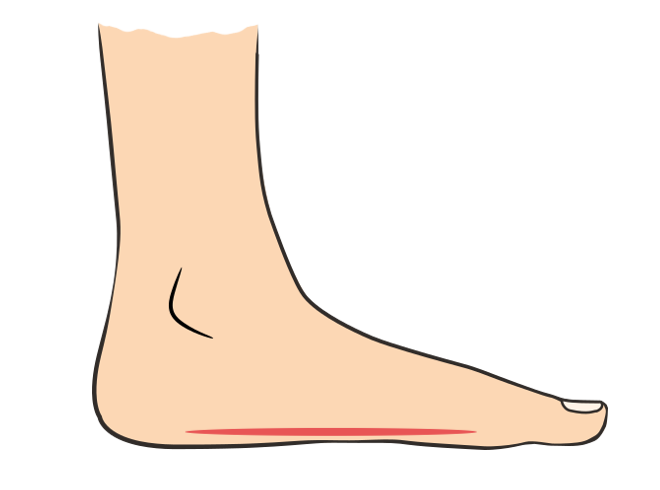Flat feet (also known as pes planus or fallen arches) is a foot condition characterized by the absence or loss of the medial longitudinal arch. The absence or collapse of the arch on the inside of the foot gives the foot a flat appearance with the entire sole of the foot contacting the ground. It’s estimated that 20 percent of the population have flat feet.

Cause of Flat Feet
Most babies are born with flat feet. An arch typically forms in the foot as a normal part of the child development. For some people, however, the muscle, bone, and ligament changes that would lead to a stable arch never take place. The exact cause of why the arch fails to develop is not known. Both environmental and genetic factors likely play a role.
When the arch collapse occurs in older adults who previously had arches in their feet the condition is known as acquired flat foot. Again, the exact cause of the arch flattening out later in life is not clear. One theory is that acquired flat foot is a progression from an already present, but mild, flat foot deformity. The aging process and degeneration of supporting tissue around the foot and ankle are also contributing factors.
Flexible vs. Rigid Flat Feet
There are two main types of flat feet: flexible and rigid. A flexible flat foot is a foot that has the ability to form an arch but the arch flattens when weight is put on the leg. This is the type of flat feet I had and refer to when I talk about fixing flat feet.
A flexible flat foot is by far the more common condition. A flat foot is typically considered flexible if an arch forms when seated with the foot dangling in the air, when standing on tip-toes, or when flexing the big toe up by hand.
A rigid flat foot cannot form an arch. This is usually the result of how the bones are shaped or formed in the foot.
Flat Feet vs. Pronation
Flat feet refers to the appearance of the foot. Pronation is a motion that involves the movement of the arch. A person with a large degree of pronation in their foot (sometimes called overpronation) will likely have a flat foot in standing. Flat feet and excessive pronation are closely related.
Flat Feet Treatment
Treatment for flat feet and fallen arches depends on the severity and cause of the problem. Conventionally, flat feet have been treated with shoe inserts, custom-made orthotics, and supportive footwear.
I used a program of exercises for flat feet and postural modifications to address the biomechanical issues causing my arches to collapse. This program involved stretching, posture correction, and strengthening exercises to reprogram my foot to form and hold a normal arch.